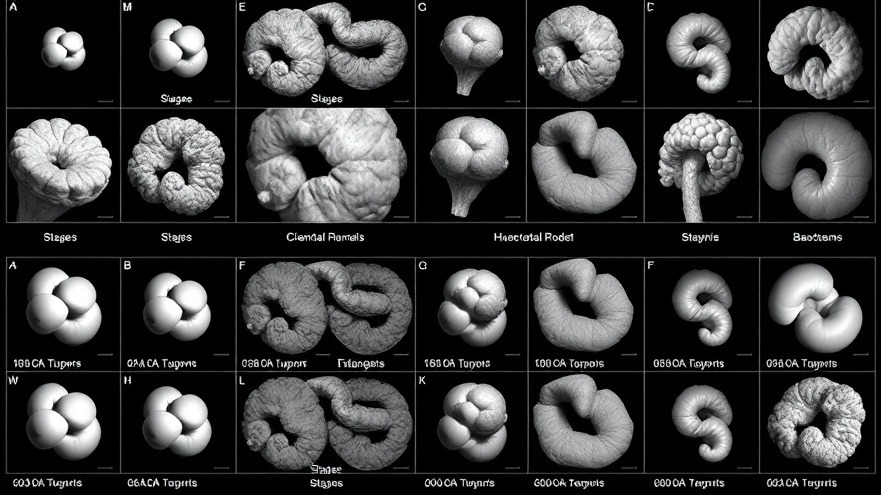
Understanding the Latest Advances in Colorectal Cancer Research
Colorectal cancer (CRC) continues to pose significant health challenges worldwide. Recent studies, particularly one from the Germans Trias i Pujol Research Institute (IGTP), highlight critical advancements in 3D tumor modeling techniques, which could revolutionize how medical practitioners approach the study and treatment of this disease.
Why 3D Tumor Models Matter
The study published in Scientific Reports emphasizes the importance of three-dimensional (3D) culture systems in mimicking the real-life conditions of tumors. Traditional two-dimensional (2D) cultures fail to replicate the complex interactions found in actual tumor tissues. The research reveals that using 3D models allows for a more accurate examination of tumor behavior and drug response, ultimately fostering improvements in preclinical studies.
Optimizing Tumor Spheroids: A Step Forward
The researchers experimented with three distinct methods for generating multicellular tumor spheroids (MCTS) from eight different colorectal cancer cell lines. These techniques included liquid overlay, hanging drop, and U-bottom plates using various extracellular matrices like Matrigel, collagen I, and methylcellulose. The findings indicated that spheroid morphology is influenced by both the cell line and the chosen culture conditions, a key insight for practitioners seeking to adopt standardized protocols in their research or clinical practices.
Enhancing Biological Relevance through Co-Culture Systems
One standout revelation of the study was the successful incorporation of colonic fibroblasts into the spheroid models. By mimicking the tumor-stroma interactions more effectively, these co-culture systems result in models that are biologically relevant and provide deeper insights into tumor dynamics. This could impact treatment strategies and patient care by reflecting the actual environment where tumors grow and develop.
A Revolutionary Approach to Cost-Effective Spheroid Generation
In practical terms, the researchers demonstrated that treating standard culturing plates with an anti-adherent solution allows for the creation of spheroids that are more cost-effective and scalable compared to commercially available cell-repellent plates. This is significant for health practitioners who are often constrained by budgetary considerations but still seek to employ effective techniques for tumor study.
Implications for Future Research and Patient Care
Dr. Sergio Alonso, a lead researcher in the study, notes that their findings could serve as a standardized guide for future studies in tumor modeling. This translates into actionable insights for practitioners who are monitoring evolving research in colorectal cancer. As the landscape of cancer treatment continues to shift with innovative technologies and methodologies, staying updated is crucial for delivering high-quality patient care.
How Concierge Health Practitioners Can Leverage These Insights
For concierge health practitioners, integrating advancements like these 3D tumor models into their clinical considerations can enhance decision-making in patient management. Understanding the relevance of tumor microenvironments could lead to personalized treatment strategies that align with individual patient needs, thus improving outcomes.
A Call to Action: Stay Ahead of Medical Innovation
As healthcare continues to evolve, keeping abreast of these technological advancements is vital for practitioners committed to providing excellence in patient care. By exploring the implications of 3D model optimizations, health practitioners can better position themselves at the forefront of colorectal cancer therapy. Engaging with ongoing research and potentially adopting these methods in practice will ensure that they remain equipped to address the complexities of this disease.
 Add Row
Add Row  Add
Add 




Write A Comment